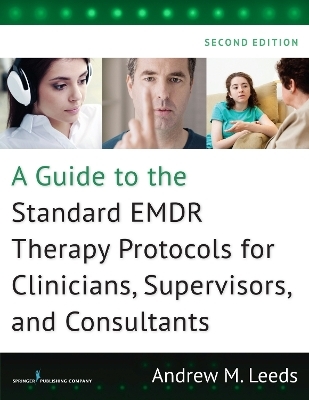
A Guide to the Standard EMDR Therapy Protocols for Clinicians, Supervisors, and Consultants
Springer Publishing Co Inc (Verlag)
978-0-8261-3116-4 (ISBN)
The book delivers clear, concise treatment guidelines for students, practicing clinicians, supervisors, clinic directors, and hospital administratorsinvolved in the treatment of those with PTSD, specific phobias, and panic disorder. For researchers conducting treatment outcome studies, it provideseasy-to-access treatment guidelines and a comprehensive set of fidelity checklists for all aspects of EMDR therapy. Many new charts, forms, scripts,illustrations, tables, and decision trees present key information clearly and concisely to guide treatment planning and documentation. Case studies withtranscripts illustrate the different protocols and further guide practitioners of EMDR therapy in informed decision making.
New to the Second Edition:
Describes updated information on mechanisms of action of EMDR therapy
Presents new evidence-based EMDR therapy
Delivers outcome studies for the use of EMDR with a broad range of diagnoses
Surveys new research about using EMDR with cancer patients and those with severe depression
Discusses the evolution of the theory of memory networks in EMDR therapy
Examines the effectiveness of bilateral stimulation on adaptive memories and images
Reflects changes resulting from DSM-5
Includes extensively updated and expanded references and glossary
Provides new charts, forms, scripts, illustrations, decision trees, and case studies illustrating different protocols
Key Features:
Presents an easy-to-use set of forms and scripts available for download from www.springerpub.com/leeds-2e
Focuses on safety and efficiency of EMDR therapy in many situations
Expands AIP model regarding using EMDR to resolve psychological defenses
Discusses ethical issues in clinical application, consultation, supervision, and research
Andrew M. Leeds, PhD, is Director of Training for Sonoma Psychotherapy Training Institute, which offers basic and advanced training programs in EMDR therapy.
CONTENTS
Preface to the Second Edition
Preface to the First Edition
Acknowledgments
Introduction
SECTION I
The Conceptual Framework for EMDR Therapy
Chapter 1 The History and Evolution of EMDR Therapy
Chapter 2 The Adaptive Information Processing Model
Chapter 3 An Overview of the Standard Eight-Phase Model of EMDR Therapy and the Three-Pronged Protocol
SECTION II
Case Formulation, Treatment Planning, and Preparing Patients for EMDR Reprocessing
Chapter 4 Case Formulation and Treatment Planning
Chapter 5 Assessing Readiness for Reprocessing
Chapter 6 The Preparation Phase
SECTION III
Phases 3 to 8 of the Standard Protocol for PTSD With the Standard Procedural Steps for EMDR Reprocessing
Chapter 7 The Assessment Phase
Chapter 8 The Desensitization Phase: Basic Procedures
Chapter 9 Maintaining and Restoring Effective Reprocessing in the Desensitization Phase
Chapter 10 The Installation, Body Scan, and Closure Phases
Chapter 11 The Reevaluation Phase and Completing the Treatment Plan
Chapter 12 Cases Illustrating EMDR Treatment of PTSD
SECTION IV
Research-Supported Standard EMDR Therapy Protocols for Other Disorders and Situations
Chapter 13 Treating Specific Phobia
Chapter 14 Treating Panic Disorder
Chapter 15 Cases Illustrating EMDR Therapy for Panic Disorder
SECTION V
Professional Development
Chapter 16 Professional Development in Clinical Application
Chapter 17 Supervising and Consulting on EMDR Therapy
SECTION VI
Fidelity Checklists, Forms, Resources, and Glossary
Appendix A: Fidelity Checklists
Appendix B: Procedural Scripts and Forms for Planning and Documenting EMDR Treatment
Appendix C: Resources
Appendix D: Glossary
References
Index
| Erscheinungsdatum | 18.03.2016 |
|---|---|
| Verlagsort | New York |
| Sprache | englisch |
| Maße | 216 x 279 mm |
| Themenwelt | Geisteswissenschaften ► Psychologie ► Persönlichkeitsstörungen |
| Medizin / Pharmazie ► Medizinische Fachgebiete ► Psychiatrie / Psychotherapie | |
| ISBN-10 | 0-8261-3116-6 / 0826131166 |
| ISBN-13 | 978-0-8261-3116-4 / 9780826131164 |
| Zustand | Neuware |
| Haben Sie eine Frage zum Produkt? |
aus dem Bereich


